![]()
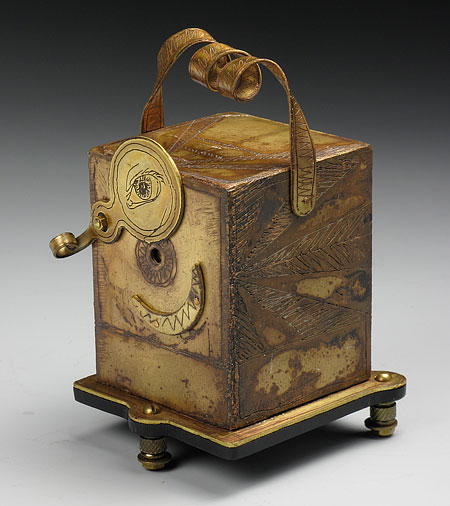 |
| MemoryCam ©2006 A brass pinhole camera. 3.5 inches high, 2.25 inches wide. In the tradition of camera manufacturing, the handle is useless. If you lift the camera with it, the bottom falls off and your film is exposed. It's a camera to photograph memories. On the base the instructions read: 1. Fix memory in your mind. 2. Point MemoryCam toward memory. 3. Expose film. You can see more photos taken by MemoryCam here. MemoryCam was on the Make blog on October 11, 2006! Photos taken by MemoryCam are here. Not for sale at the moment - I like to keep things around for awhile so I can enter them in shows. Eventually I will put a price on this camera. You can email me at artATjudithhoffmanDOTnet if you want to be notified when it goes on sale. |
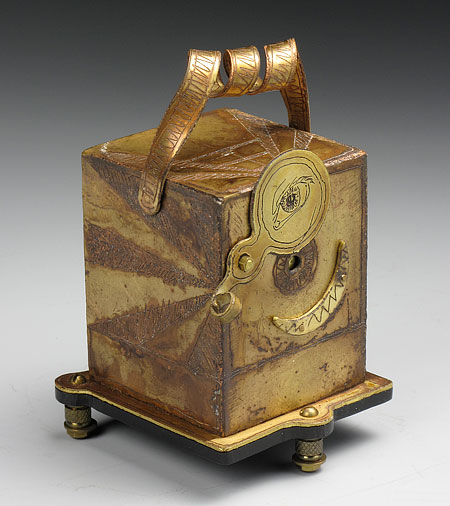 |
| The other side - that's a heat patina. |
 |
| Here's the camera open, with a negative on the left. I use light sensitive photo paper as the negative. It's pretty easy to work with, although in my studio under bright lights, the exposures are in minutes. The negative is curved because I cut the paper long and curl in a u-shape when I put it in the camera. I could cut it to just fit in the back of the camera, but I would not get the image circle. You can see the image circle on the left and right sides of the negative. |
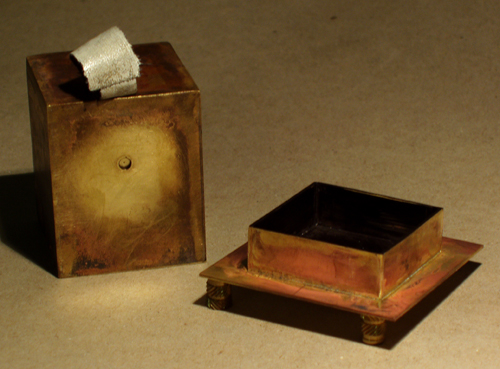 |
| The first state of MemoryCam. The part on the left is a bottomless box. It lowers onto the base on the right. The overlap on the base is about 3/8 inch. It's not a perfect fit, so I thought it would leak some light. I lined the inside of the camera with black gaffer's tape. You can see the tiny pinhole in the larger hole on the face of the camera. That's a piece of gaffer's tape I used as the first shutter. See a blog post about soldering the box here. As soon as I had the basic box, I took the photo below. |
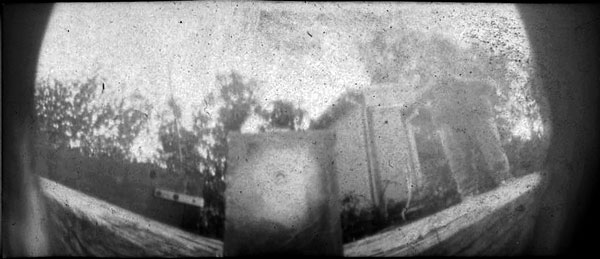 |
| MemoryCam takes a photo of itself. Here's the first photo I took with the MemoryCam. I had the basic box built and wanted to see if it would work. I used gaffer's tape for the shutter. You can see me standing where I thought I would be out of sight, timing the photo. You can also see the circle of the image. It comes through the pinhole round, but is cropped by the narrow paper on the top and bottom. My head is a blur because I was looking around at the garden. I think the gritty stuff is either from old chemicals or some other photo processing error on my part. |
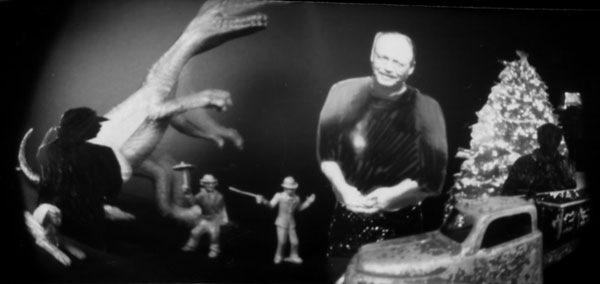 |
| Memory Number 436, taken with my MemoryCam on Worldwide Pinhole Photography Day 2007. Exposure: 6 minutes. Black and white photo paper was used as film. I developed the paper negative like regular photo paper and scanned it into the computer. The subjects are a combination of photo cut-outs and toys. The paper film is 1.5 x 3.5 inches. Because the exposure is so long (around 5 or 6 minutes), and the paper film has to be developed, dried and then scanned, it's a slow process (by my standards). I had to take about 6 photos to get one I liked. In a previous shot I thought my brother's pants were too bright, so I scribbled over them with magic marker. You can see more photos taken by MemoryCam here. |